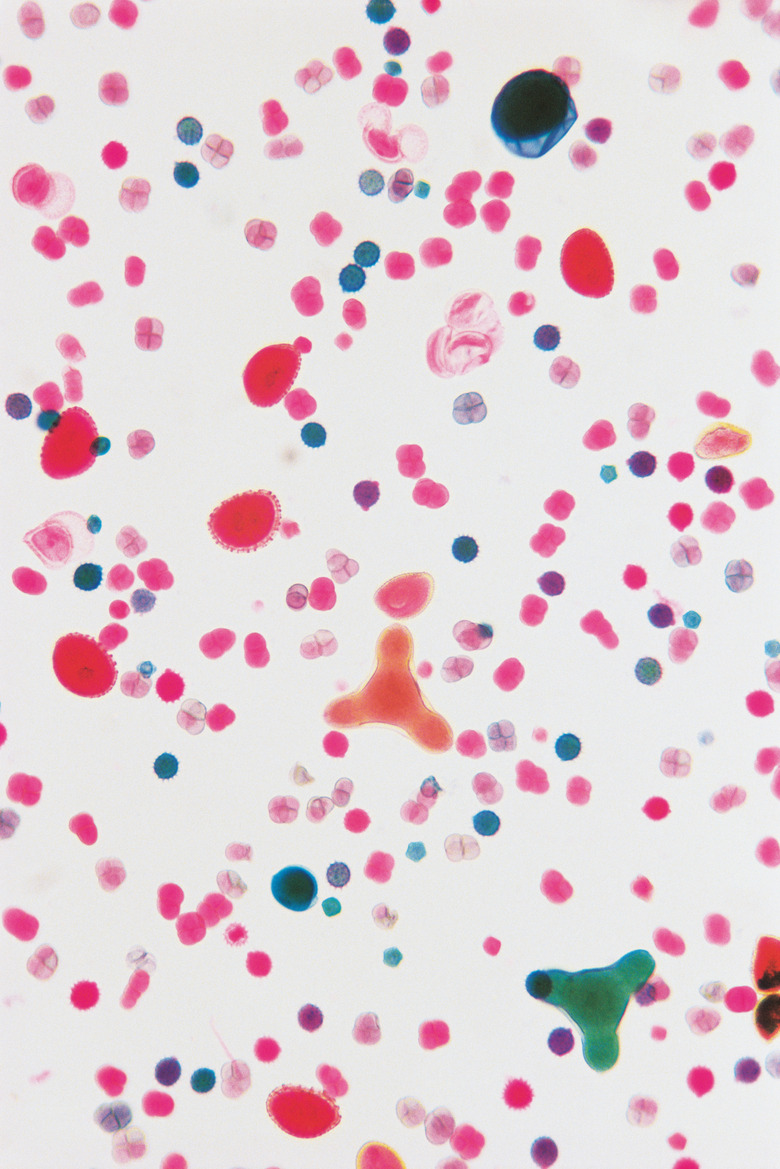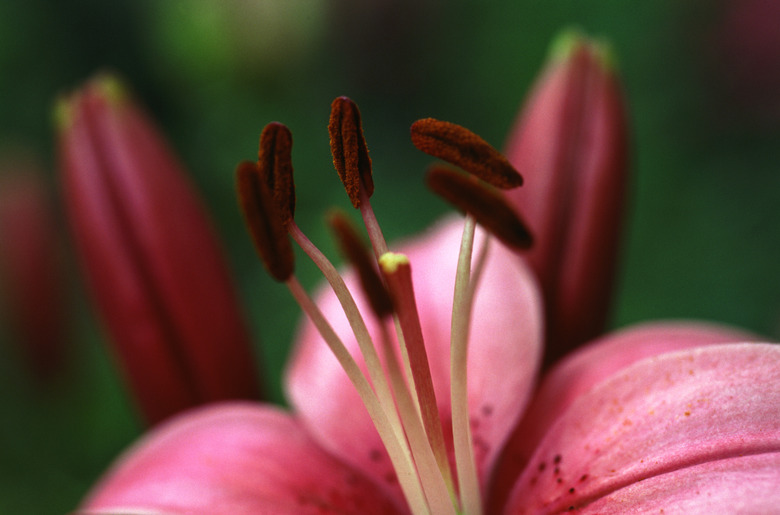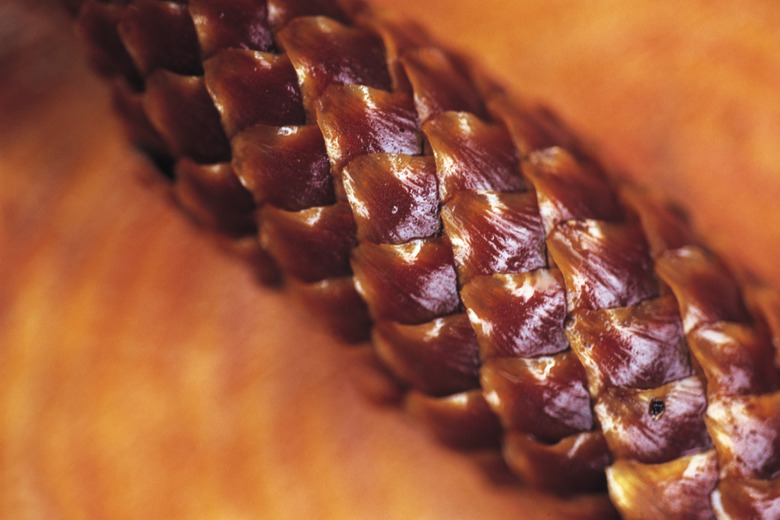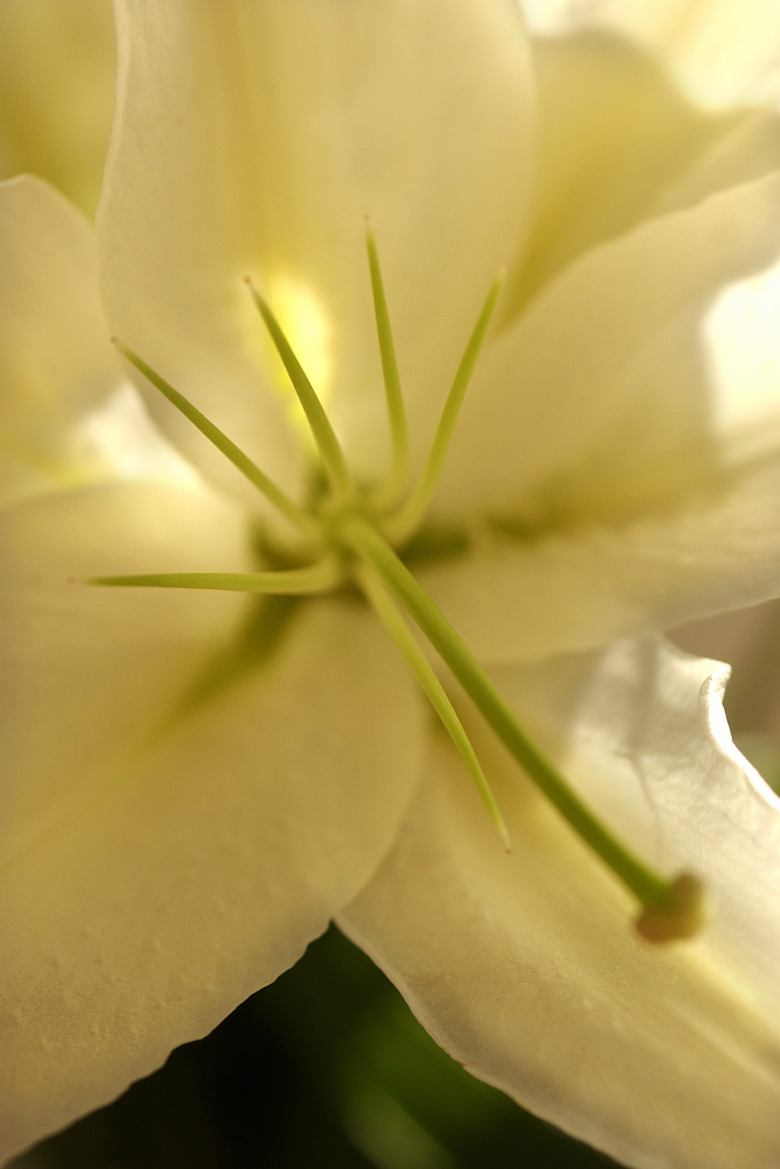How Do The Sperm Nuclei In A Pollen Grain Get To The Egg Nucleus In A Plant Ovule?
When it comes to plants, "fertilization" refers to more than the act of providing them with the nutrients they need to grow. In physiological terms, fertilization is also the name of the process in which a sperm nucleus fuses with an egg nucleus, eventually leading to the production of a new plant. In animal reproductive systems, sperm are mobile and can swim to egg cells, but sperm travel quite differently in seed-bearing plants.
Development
Development
The process that forms sperm cells in seed-bearing plants is actually the same one that results in the structure responsible for bringing those cells into the ovule. Within a plant's male reproductive structure, cells undergo division to form pollen grains. Each pollen grain contains a few haploid cells, almost all of which will become sperm cells. One, however, will develop into a structure called the pollen tube and later play the role of transporter.
Pollination
Pollination
Pollination occurs when, thanks to a factor such as wind or an insect, pollen grains are carried from a plant's male structure to a female structure. After a pollen grain lands, one of the cells it contains begins growing toward the ovule, becoming the pollen tube. The pollen tube approaches an opening in the ovule wall called the micropyle. This happens slightly differently in plants called gymnosperms and angiosperms.
Gymnosperms
Gymnosperms
Gymnosperms, also called "naked-seed plants," include plants like conifers and ginkgo that produce neither flowers nor fruit. Instead of being hidden within an ovary, a gymnosperm's ovule is most often attached to an exposed structure like the scale of a pine tree's female cone, which is actually a modified leaf. In the case of pine trees, structures inside the ovule do not produce an egg until pollination and the growth of the pollen tube.
Angiosperms
Angiosperms
Pollination in flowering plants, also known as angiosperms, places pollen not on a pine cone scale but on the stigma, the sticky top of the plant's female structure. That structure, called the pistil, is composed of the stigma, the style and the ovary. After pollination, the pollen tube grows down the style, which is essentially a tube, into the ovary. The ovary contains the egg-bearing ovule that the pollen tube seeks.
Fertilization
Fertilization
No matter the classification of seed-bearing plant, once the pollen tube has inserted itself into the ovule's micropyle, sperm cells have the channel that will transport them from the pollen grain to the egg within the ovule. After that, a sperm cell will fuse with the egg cell, and their nuclei will merge, completing the process of fertilization.
Cite This Article
MLA
Johnson, Sheila. "How Do The Sperm Nuclei In A Pollen Grain Get To The Egg Nucleus In A Plant Ovule?" sciencing.com, https://www.sciencing.com/sperm-nuclei-pollen-grain-egg-nucleus-plant-ovule-2520/. 24 April 2017.
APA
Johnson, Sheila. (2017, April 24). How Do The Sperm Nuclei In A Pollen Grain Get To The Egg Nucleus In A Plant Ovule?. sciencing.com. Retrieved from https://www.sciencing.com/sperm-nuclei-pollen-grain-egg-nucleus-plant-ovule-2520/
Chicago
Johnson, Sheila. How Do The Sperm Nuclei In A Pollen Grain Get To The Egg Nucleus In A Plant Ovule? last modified March 24, 2022. https://www.sciencing.com/sperm-nuclei-pollen-grain-egg-nucleus-plant-ovule-2520/



